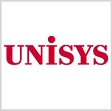National Security Agency designation allows government agencies to use Unisys Stealth to protect classified information systems
 Unisys Corporation of Blue Bell, PA announced on July 25 that Unisys Stealth® has been certified as among the products eligible for use by governments in more than 20 countries to protect their most sensitive systems and information.
Unisys Corporation of Blue Bell, PA announced on July 25 that Unisys Stealth® has been certified as among the products eligible for use by governments in more than 20 countries to protect their most sensitive systems and information.
Stealth was evaluated and accredited by the National Information Assurance Partnership (NIAP) as meeting internationally-accepted standards for trusted security products and solutions. NIAP certification, established by the U.S. National Security Agency (NSA) and the U.S. National Institute of Standards and Technology, is recognized by governments in countries such as Australia, Canada, Germany, India, Malaysia, New Zealand and the United Kingdom. Only the most secure products achieve this very exclusive designation.
Stealth also was concurrently approved by the NSA’s Commercial Solutions for Classified (CSfC) program, opening the door to U.S. federal agencies to purchase Stealth within composite solutions that protect classified systems and data.
“These certifications make some of the most advanced security technology available not only to the U.S. intelligence community and Department of Defense, but to civilian agencies and governments in many other countries as well,” said Tom Patterson, chief trust officer, Unisys. “Achieving NIAP certification provides independent validation of the objective assurance that we’re abiding by the stringent security requirements demanded by federal agencies and top enterprises.”
For a product to be NIAP-certified, it must undergo evaluation in the United States at an approved Common Criteria Testing Laboratory. Additionally, the CSfC program requires specific selected requirements to be included in the evaluation validating that the product complies with the applicable NIAP-approved protection profile.
With the CSfC approval, U.S. federal agencies can use Stealth in layered solutions protecting classified data, according to a statement by the National Security Agency/Central Security Service’s Information Assurance Directorate.
Stealth uses identity-based microsegmentation techniques and encryption to create segments within an organization where only authorized users can access information, while those without authorization cannot even see that those endpoints exist. Stealth cryptographically confines their access to a single segment of the network, with no ability to move laterally to other parts of the organization. This helps organizations mitigate attacks and hacker incidents by rendering devices, data and end users undetectable on networks.
Source: Unisys








